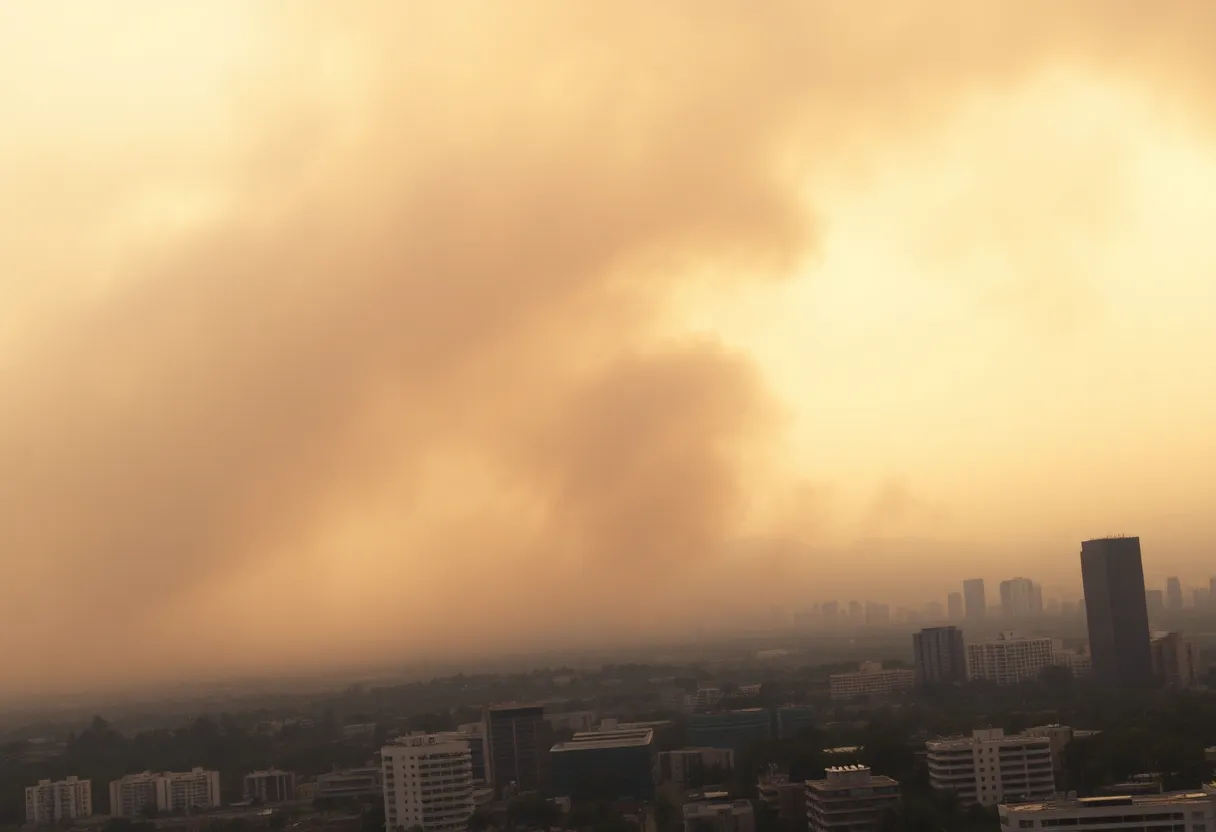News Summary
Wildfires Ignite Air Quality Concerns in Los Angeles: A Hidden Threat from Asbestos and Toxic Particles
The skies over Los Angeles have transformed into a smoky haze as recent wildfires wreak havoc, raising alarms not just for visibility but for the air quality. The implications of these fires extend beyond the visible smoke and ash; emerging evidence suggests that potentially lethal particles, including asbestos, are now intertwining with the city’s already pollution-laden air.
Understanding the Air Quality Index (AQI)
The Air Quality Index, commonly referred to as the AQI, serves as the primary system to signal when air pollution reaches hazardous levels. It operates on a scale from 0 to 500, with color coding to denote safety levels. However, public health officials caution that the AQI is not a comprehensive measure, particularly for those impacted by urban wildfires and windy conditions, meaning that residents should be cautious even when AQI readings indicate “good” or “moderate” air quality.
The Danger Lurking in the Air
While the AQI primarily measures particulate matter, it fails to account for the toxicity of these particles. Presently, analyses show the air may contain hazardous substances such as plastic, copper, lead, and asbestos resulting from incinerated structures. Further complicating the issue, the AQI does not capture many ash particles because they are often too large for standard measuring instruments. Yet, these undetected large particles can still pose significant health risks.
Precautions for Los Angeles Residents
For LA County residents, vigilance is essential. If you smell smoke, observe ash, or find yourself in areas with elevated AQI levels, it’s advisable to take measures like limiting outdoor exercise, keeping children indoors, wearing an N95 mask, and utilizing air filters in homes. Despite recent AQI levels hovering between 30 and 60—considered safe—the situation can be misleading as it might not reflect the real toxicity of airborne particles.
The Role of Wind in Pollution Spread
Wind conditions can swiftly alter air quality, dispersing ash and other harmful particles that the AQI does not measure. Many sensitive groups—including individuals with existing lung or heart conditions, the elderly, pregnant women, and children—face heightened vulnerabilities. Health officials emphasize that the smell of ash is typically a more reliable indicator of danger than visibility.
Stay Alert: Red Flag Warnings in Effect
The National Weather Service has issued critical red flag warnings due to anticipated high winds. Such conditions are likely to exacerbate air quality issues, increasing the dispersion of toxic particulates in already vulnerable areas. Residents living near active wildfires should exercise extreme caution, remaining aware of fire conditions and community support networks.
Best Practices for Ash Cleanup
Caution extends beyond just avoiding outdoor activity; it requires careful ash cleanup practices. Residents are advised against using garden leaf blowers that may scatter ash particles further into the air. Instead, misting ash with water before cleaning helps prevent dangerous particles from becoming airborne. It’s crucial to handle this debris carefully to minimize exposure to harmful heavy metals released in the wake of these fires, including arsenic and asbestos.
The Bottom Line: Every Smoke Cloud Presents a Threat
The situation in Los Angeles serves as a potent reminder that all smoke is harmful, meriting caution regardless of AQI readings. With over 12,000 structures destroyed by recent wildfires, the consequences of these disasters are reaching far beyond immediate physical damage. As residents navigate this challenging environment, it becomes clear that understanding the complexities of air quality and implementing safety measures is essential for public health.
As the region continues to grapple with the effects of wildfires, the need for proactive measures to safeguard health becomes more critical than ever. Every precaution counts, and being informed is the first step in combating this hidden threat.
Deeper Dive: News & Info About This Topic
HERE Resources
Velan Inc. Charts a Fresh Path Forward with Major Strategic Moves
FDA Takes a Bold Step to Combat Asbestos in Talc-Containing Cosmetics
Hazardous Aftermath of California Wildfires: Asbestos Concerns on the Rise
Answers to Common Legal FAQs About Mesothelioma
Los Angeles Struggling with Smoke, Ash, and Hidden Dangers from Wildfires
Public Outcry as Boise Delays Critical Hearing on Asbestos-Related Demolition
FDA Proposes Crucial Testing Methods for Asbestos Detection in Talc-Containing Cosmetics
The Rialto Square Theatre: Joliet’s Jewel Reopens After Asbestos Scare
Asbestos Handling Raises Alarming Safety Concerns in San Diego
Local Business Owners Face Hefty Fines for Asbestos Violations



















